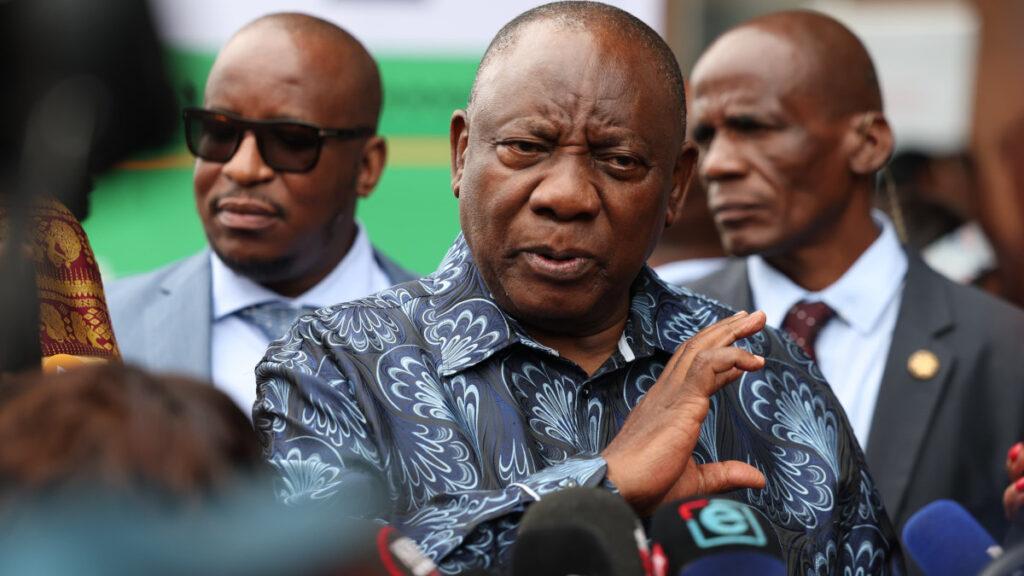Africa-Press – South-Africa. While the rand has firmed up against the US dollar — and is likely to keep pushing stronger — it is still some way off from its ‘fair’ value of R16/$, and a series of own-goals is to blame.
According to Investec chief economist Annabel Bishop, the rand should be trading at about R16 to the dollar when considering purchasing power parity.
However, weak domestic growth, high state borrowings, insufficient infrastructure repair at Transnet, and populist policies in the country are keeping the currency back and adding significant risk premia to its value.
Notably, these factors are baked into the currency, with the day-to-day movements more directly impacted by international events.
Bishop noted that the rand is currently dependent on happenings in and around the United States, and will likely remain tied to this moving forward.
That is to say that the recent stability of the rand, settling around R18.20/$, is largely thanks to markets benefiting from the US and China reaching a trade deal over the weekend.
After US President Donald Trump launched an aggressive global tariff war in early April, most of the punitive rates were rescinded and put on ice for 90 days.
However, Washington rapidly escalated a trade war with China, resulting in a 145% tariff exchange and effectively halting trade on key imports and exports.
Following a meeting at the weekend, the US’ reciprocal tariffs are now reported to fall by 115%, with a 90 day pause on the recent new tariffs, with room for further negotiations.
Bishop said that the meetings have been presented as a “total reset” in US-China trade relations, with other officials noting “a great deal of productivity”.
As growth concerns receded somewhat, markets have also pulled back on US interest rate expectations.
The United States is now expected to see at least two rate cuts this year. This is seen in the latter half of the year, likely in September and December, Bishop said.
The improvement in market expectations has added to the rand’s recent strength, as risk aversion has dropped from elevated levels in earlier weeks.
While risks are still present, the economist noted that markets have moved into risk-on territory, boosting the rand.
South Africa’s problems are still holding the rand back
Investec Chief Economist, Annabel Bishop
Even as international sentiment turns more positive, South Africa’s home-made problems are still palpable.
In the more immediate term, markets will keep a sharp eye on the third budget to be tabled next week (21 May 2025).
While the budget is expected to pass with support from across the government of national unity (GNU) this time around, uncertainty persists around the grand coalition.
Bishop flagged risks related to some factions of the ANC continuing to seek the expulsion of the DA from the GNU, which creates lingering investor risk.
This is part of the broader political risk, fuelled by disagreements over legislation rapidly passed by the ANC at the end of the last administration before the national elections at the end of May.
These populist policies, including things like National Health Insurance and Land Expropriation without compensation, depress business confidence.
Polled support for the ANC has crumbled, and many view the GNU as an extension of the ANC, which holds a tight rein and control over the country’s policies and legislation, despite being a minority.
This has also led to creeping progress in the country’s much-needed reforms.
President Cyril Ramaphosa acknowledged this past week that economic reforms—including in the electricity sector, where a lot of progress has been made—need to be accelerated.
In partnership with the private sector, the government has committed to a “sprint” to get this done. However, South Africa has historically overpromised and underdelivered in this regard.
Compounding issues will be economic growth, with many projections for GDP growth in 2025 to fall somewhere between 1.0% and 1.5%—barely enough to meet population growth.
When combined with South Africa’s high levels of debt and the fading ‘shine’ of the GNU, markets will certainly proceed with caution.
Source: businesstech
For More News And Analysis About South-Africa Follow Africa-Press






